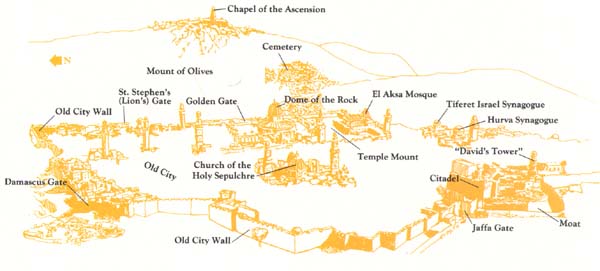Image Details

In this view four of the gates into the city are visible; two—the New Gate and Herod’s Gate—had not yet been built. In the foreground on the west is the Jaffa Gate. To its right is the Citadel with its square tower built upon Hasmonean remains, still surrounded by the moat that would soon be filled to make way for a roadway. The so-called Tower of David mosque appears on the southern edge of the Citadel. On the north side of the Old City is the Damascus Gate. Penetrating the eastern wall is St. Stephen’s (Lion’s) Gate and the sealed Golden Gate. (Not visible, but present at the time, are the Dung and the Zion Gates in the southern city wall.)
Domes allow us to identify several important structures within the Old City. On the east the Dome of the Rock and the Al Aksa Mosque dominate the Temple Mount. Almost on a line with the Dome of the Rock toward the west are the two domes of the Holy Sepulchre Church, while on the far right toward the south, are two domed synagogues in the Jewish Quarter. The one in the foreground marks the Hurva; the one surrounded by an open roof with decorative railing is the Tiferet synagogue; both were destroyed during the Jordanian period between 1948 and 1967.
